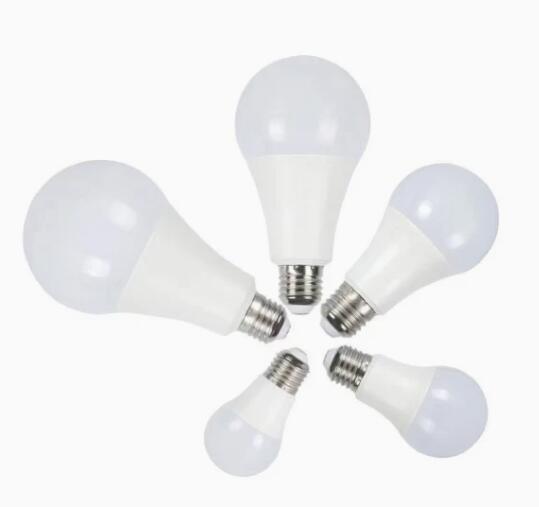How LED Lighting Can Help Restore Our Night Skies and Reduce Light Pollution
2024-10-26
In recent years, light pollution has become a serious environmental and public health issue. Excessive artificial lighting disrupts ecosystems, affects human well-being, and prevents us from fully experiencing the night sky. However, LED lighting technology offers an effective solution for minimizing light pollution, providing a responsible alternative to traditional lighting methods. In this blog, we’ll examine how LED lighting can help combat light pollution and explore real-world examples of LED lighting’s positive impact on night environments.
What Is Light Pollution and Why Should We Care?
Light pollution is the inappropriate or excessive use of artificial light, and it can take various forms:
1. Glare: Causes discomfort or impaired vision by creating excessive brightness.
2. Skyglow: The brightening of the night sky over urban areas, concealing stars.
3. Light Trespass: Unwanted or unnecessary light spilling into areas like homes or natural habitats.
4. Clutter: Bright and excessive lighting sources that create confusion and visual disruption.
Light pollution has both immediate and long-term impacts. It disrupts the natural behavior of wildlife, interferes with human circadian rhythms, and contributes to energy waste. Furthermore, excessive light exposure makes astronomical observation difficult or impossible, depriving communities of a natural experience.
Why LED Bulbs Are Effective in Reducing Light Pollution
LED technology has proven to be a powerful tool in addressing light pollution for several reasons:
1. Direct and Controlled Lighting:
- LEDs can be designed to emit light in specific directions, making it easier to focus illumination only on needed areas. This controlled lighting prevents spillover, which is particularly important for street and outdoor lighting where light pollution is most problematic.
2. Warm Color Options:
- Blue-rich light, often emitted by traditional and cool LED lights, contributes heavily to skyglow because it scatters more in the atmosphere. Warmer LEDs (with a color temperature of around 3000K or below) reduce skyglow by emitting light that scatters less, making them an ideal choice for areas that need outdoor lighting.
3. Adjustable Brightness and Dimming Capabilities:
- Many LED fixtures come with dimming features, allowing them to adjust light levels according to real-time needs. For instance, streetlights can be programmed to reduce brightness during late-night hours when traffic decreases, reducing unnecessary light and conserving energy.
4. Durability and Efficiency:
- LEDs are highly efficient and durable, lasting up to 25 times longer than incandescent bulbs. Their energy efficiency means they consume less power while providing equivalent or even superior brightness, allowing for lower-intensity lighting options that still meet safety needs.
Real-World Applications of LED Lighting to Reduce Light Pollution
1. Urban LED Streetlight Conversions:
- Numerous cities have implemented LED streetlight conversions to reduce light pollution. Cities such as Tucson, Arizona, and London, England, have retrofitted streetlights with LEDs that have lower color temperatures and reduced glare, leading to noticeable improvements in nighttime visibility and a decrease in skyglow.
2. Residential Lighting Solutions:
- LED fixtures designed with shields and downward-focused light reduce light trespass in residential areas. Homeowners can use LEDs with low-intensity, warm hues to illuminate driveways or pathways without affecting nearby properties or creating unnecessary brightness.
3. National and State Park Initiatives:
- Some national and state parks are adopting LED lighting solutions to preserve dark skies. For example, the Grand Canyon National Park uses shielded LED fixtures to reduce light pollution, allowing visitors to enjoy stargazing in an environment free of skyglow.
4. Corporate and Commercial Adoption:
- Many businesses are adopting LED lighting with automatic dimming and motion sensors to reduce excess light. This practice is not only eco-friendly but also minimizes light pollution, as lights are only activated when needed.
The Environmental and Social Benefits of Reduced Light Pollution
1. Improved Ecosystem Health:
- By reducing light pollution, LED lighting helps protect nocturnal animals and their habitats. Natural light-dark cycles are crucial for animals like turtles, bats, and birds, and reducing artificial light exposure prevents disruptions in these cycles.
2. Better Human Health and Well-being:
- Artificial light at night has been linked to sleep disorders, which can impact mental and physical health. LEDs that reduce blue light exposure contribute to better sleep quality, benefiting overall human health.
3. Enhanced Nighttime Experience:
- Reducing light pollution improves the quality of life by providing communities with access to natural darkness and the chance to observe the stars. LED lighting, with its focused and lower-intensity properties, allows urban areas to maintain safe lighting levels while preserving a connection to the night sky.
4. Energy Conservation and Reduced Carbon Footprint:
- LEDs require significantly less energy than traditional lights, which helps reduce carbon emissions and energy costs. Cities that have switched to LED lighting have reported energy savings of up to 50-60%, making it an environmentally responsible choice.
LED bulbs are a game-changer in the fight against light pollution. Through directed light, reduced glare, warm color temperatures, and dimming capabilities, LEDs offer a practical solution for cities, businesses, and homeowners who want to enjoy safe and efficient lighting without compromising our natural nighttime environment. As LED technology continues to evolve, so does our potential to reduce light pollution, conserve energy, and restore the beauty of the starry night sky.



